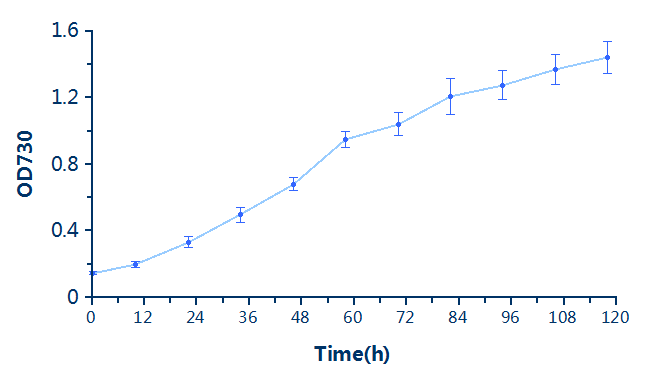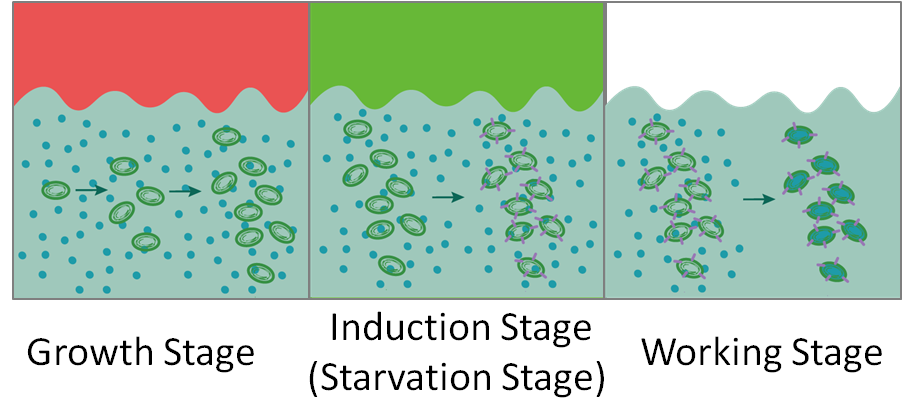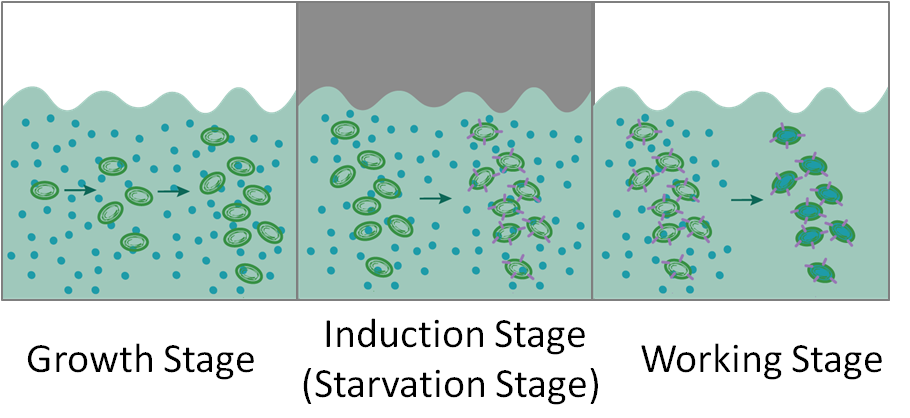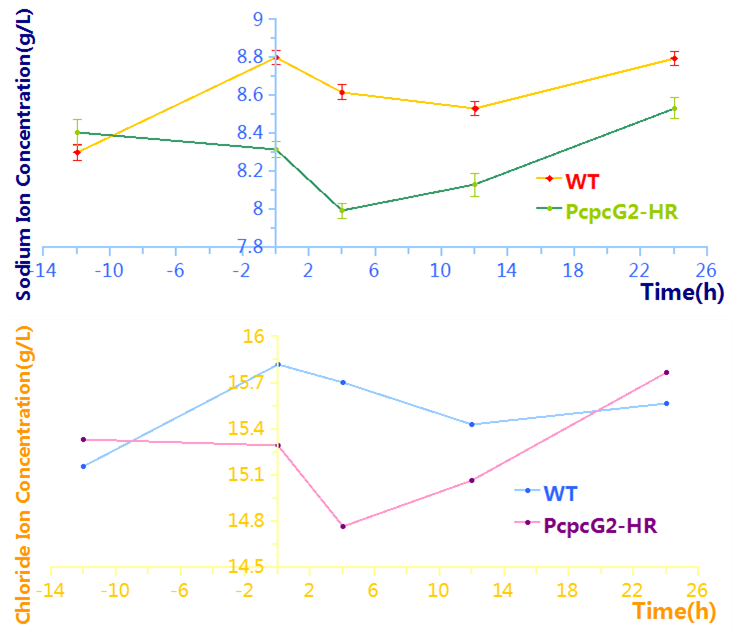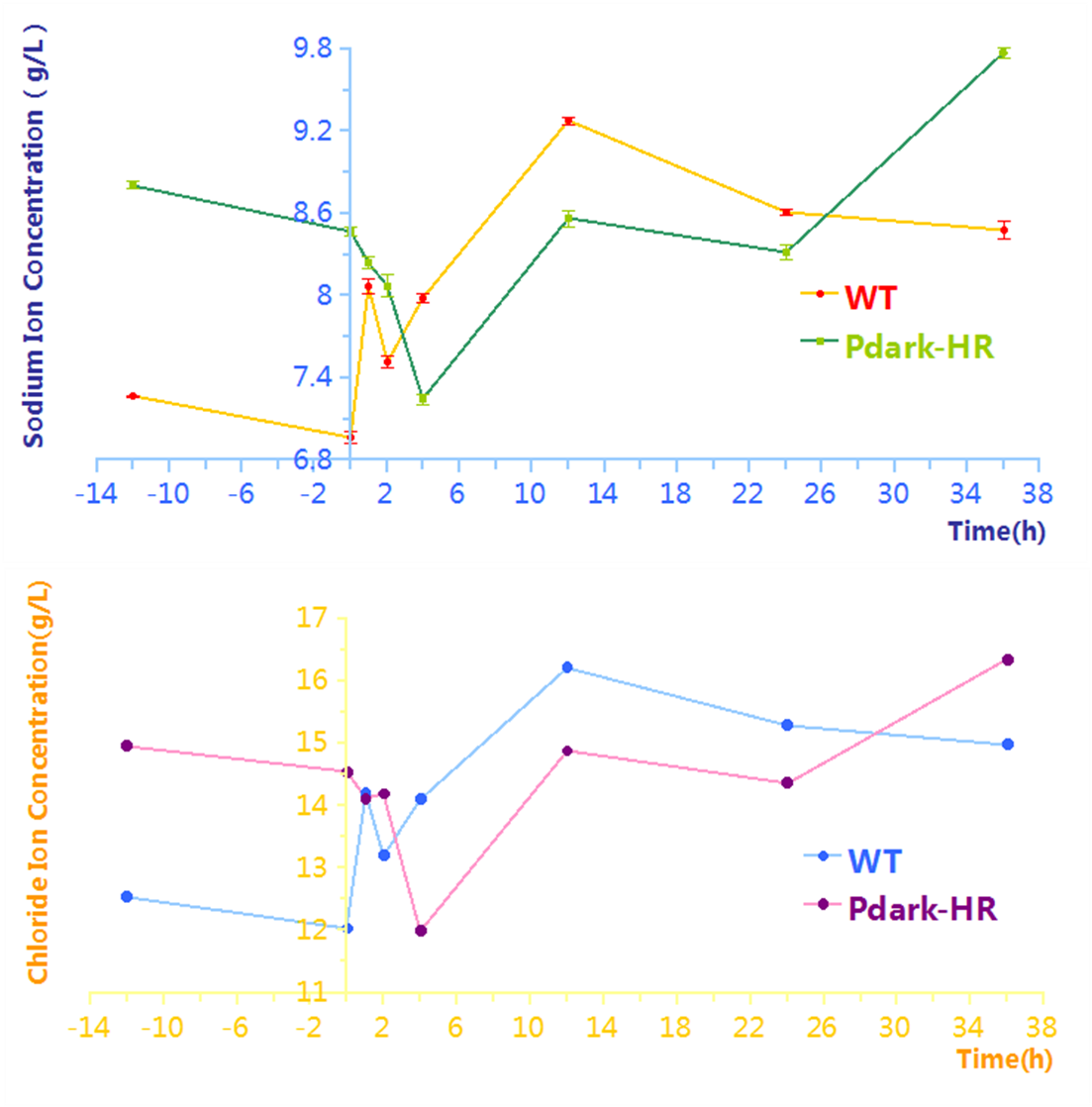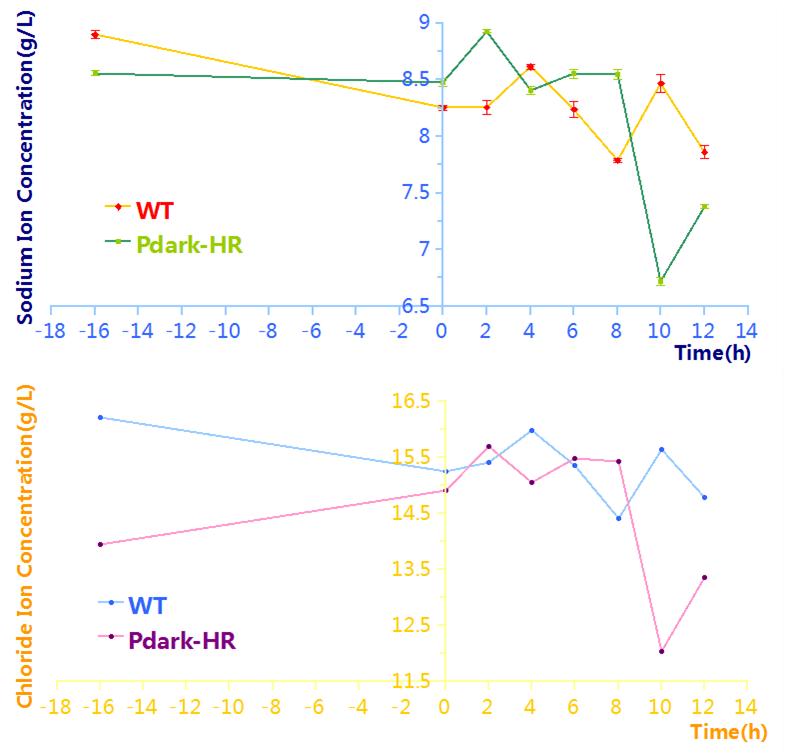Desalination Process
Contents
Process design
Three-stage cultivation
The cultivation of engineered cyanobacteria is proposed to be comprised of three stages: growth stage, induction stage (starvation stage) and desalination stage. And here are the reasons of this design:
1. Since high density of cyanobacteria is essential for efficient biodesalination and expression of heterologous protein will probably decrease the growth rate significantly, there should be a growth stage between the inoculation time and the beginning of induction.
2. In our biodesalination process, the induction stage is also starvation stage because the induction conditions we designed omitted main energy source of cyanobacteria-red light.
3. Halorhodopsin is a light-driven chloride pump, and the maximum absorption wavelength is 580nm, which locates in the yellow light region. Therefore the light condition for halorhodopsin to work must be different from the condition for the induction stage.
Process controlled by PcpcG2
Based on PcpcG2 and halorhodopsin, we established a biodesalination system which relies on red and green light. The light colors in the three stages are red light, green light and white light respectively.
In the growth stage, red light is enough for photosynthesis of cyanobacteria, which has been proved to be feasible by a recent report(Abe, K. et al. 2014). To further confirm it, we determined the growth curve under red light, which is shown in Figure 1.4.1. This growth rate is no slower than that of the stain under natural light as long as we adjust the light intensity.
In the induction stage, the green light induces the expression of HR. Additionally, green light can’t provide energy source for chlorophyll, thus creating a starvation condition. And the starvation can inhibit active export of sodium, which is essential for biodesalination in the working stage.
In the working stage, halorhodopsin absorbs light to drive chloride import. Addtionally, cyanobacteria will regain energy under natural light. The biodesalination process controlled by PcpcG2 is shown in Figure 1.4.2.
Figure 1.4.2 Biodesalination process controlled by PcpcG2.
In the growth stage, cyanobacteria absorb energy from red light and grow to a certain density; In the induction stage, green-light induces the expression of halorhodopsin, and additionally pushes cyano bacteria to starvation status; In the working stage, engineered cyanobacteria absorb sodium chloride under natural light and cyanobacteria regain energy.
Process controlled by Pdark
Based on Pdark and HR, we constructed an improved biodesalination system which depends only on the switch between white light and darkness. In the growth stage and working stage, we provide white light, while in the induced expression stage the light source is removed. Darkness leads to starvation and the starvation can inhibit active export of sodium, which is essential for biodesalination in the working stage.(described l in section transport module). The biodesalination process controlled by Pdark is shown in Figure 1.4.3.
Figure 1.4.3 Biodesalination process controlled by Pdark.
In the growth Stage, cyanobacteria grow to a log-phase; in the induction stage, darkness induces the expression of halorhodopsin, and additionally pushes cyanobacteria to starvation status; in the working stage, engineered cyanobacteria absorb sodium chloride under natural light.
Biodesalination Assay
Assay on PcpcG2-HR
The effectiveness of this biodesalinaion process is proved by determination of the concentrations of extracelluar sodium and chloride or desalination assay, which are shown in Figure 1.4.4. During the early time of working stage, there is an obvious decrease of concentration compared to that of Wild-type, which indicates that our biobrick (PcpcG2-HR, BBa_K1642010) really works in cyanobacteria under this biodesalination process! The following rise of concentration can be explained by the regain of energy under natural light in the working stage. Considering that we focus on the biodesalination process controlled by Pdark, we didn’t optimize this process.
Assay on Pdark-HR
The effectiveness of this biodesalination process is proved by determination of the concentrations of extracellular sodium and chloride or desalination assay, which are shown in Figure 1.4.5. During the early time of working stage, there is an obvious decrease of concentration compared to that of wild-type, which proves the function of our biobrick(Park-HR, BBa_K1642011). An obvious decrease during the early time and a following rise are consistent with that of the process controlled by PcpcG2.
To figure out the limitation of desalination, we prolonged the length of the induction stage and adjusted the times of taking samples. The results are shown in Figure 1.4.6. The 10h in the working stage is approximately the minimum point.
The acquisition of the minimum point makes it possible to design a longer biodesalination process. We can extend this process by alternating induction stage (starvation stage) and working stage, make the cyanobacteria to experience starvation and regain of energy for more cycles, thus achieving more reduction of salinity. Moreover, if the length of the induction stage and working stage are approximately 12h, after growth stage this improved biodesalination system can be controlled by the natural alternation between day and night without any human intervention
Next: Protocol
